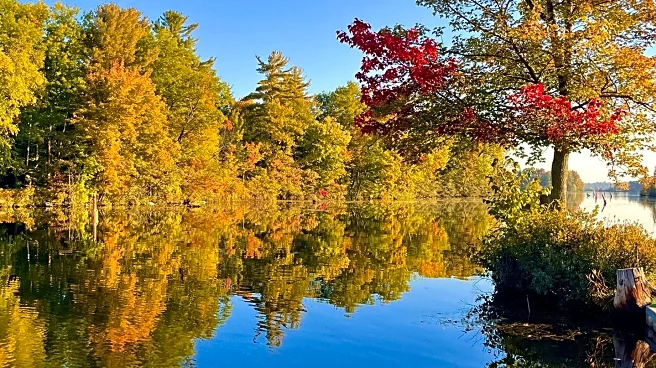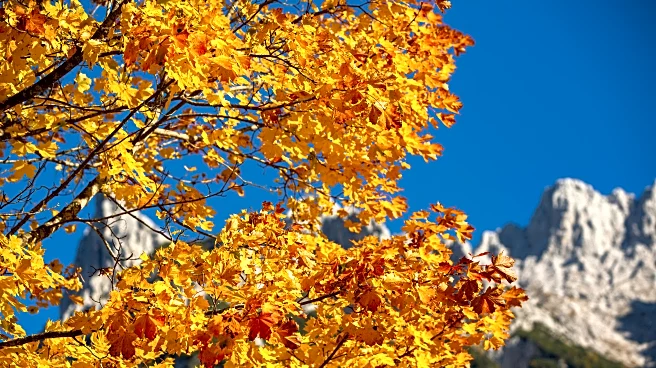What's Happening?
A fall foliage map from Explore Fall has identified regions in the United States currently experiencing peak autumn colors. The map indicates that states such as Iowa, Nebraska, South Dakota, Missouri,
Michigan’s Lower Peninsula, West Virginia, Pennsylvania, Ohio, Connecticut, Rhode Island, and Massachusetts are at peak foliage. Meanwhile, areas like Montana, Idaho, Wyoming, North Dakota, Oregon, Minnesota, Wisconsin, Maine, northern New Hampshire, Vermont, and western Colorado have already passed their peak. The map also categorizes regions into 'high color,' 'moderate,' and 'low' foliage, with states like Indiana, Illinois, and Kansas showing high color, while parts of Tennessee, Kentucky, Oklahoma, and the Texas Panhandle are moderate. Areas with low foliage include parts of California and Texas, as well as most of Mississippi, Alabama, Georgia, and South Carolina. Florida, South Texas, and the Gulf and Southeast Coasts are experiencing little to no fall foliage.
Why It's Important?
The fall foliage season is a significant cultural and economic event in the U.S., attracting tourists and nature enthusiasts to regions known for their vibrant autumn colors. This seasonal change not only enhances local tourism but also impacts local economies, particularly in areas where fall foliage is a major attraction. The timing and intensity of fall colors can vary due to weather conditions, affecting the duration and quality of the foliage season. This year, experts like AccuWeather's Paul Pastelok have noted that while vibrant colors are expected in New England and the Midwest, the duration of peak foliage may be shorter than usual. This variability can influence travel plans and local businesses that rely on seasonal tourism.
What's Next?
As meteorological fall continues until November 30, regions across the U.S. will experience varying stages of foliage change. The transition to meteorological winter on December 1 will mark the end of the fall foliage season. In the meantime, states experiencing peak or near-peak foliage will likely see an influx of visitors seeking to enjoy the seasonal colors. Local tourism boards and businesses may capitalize on this period to promote outdoor activities and events. Additionally, weather conditions such as rain and wind could impact the longevity of the foliage, prompting visitors to plan their trips accordingly.
Beyond the Headlines
The fall foliage season also highlights broader environmental and climatic trends. Changes in the timing and intensity of foliage can be indicators of climate patterns, such as temperature fluctuations and precipitation levels. These environmental factors not only affect the aesthetic quality of the foliage but also have implications for local ecosystems and biodiversity. Understanding these patterns can provide insights into broader climate change impacts and inform conservation efforts.














